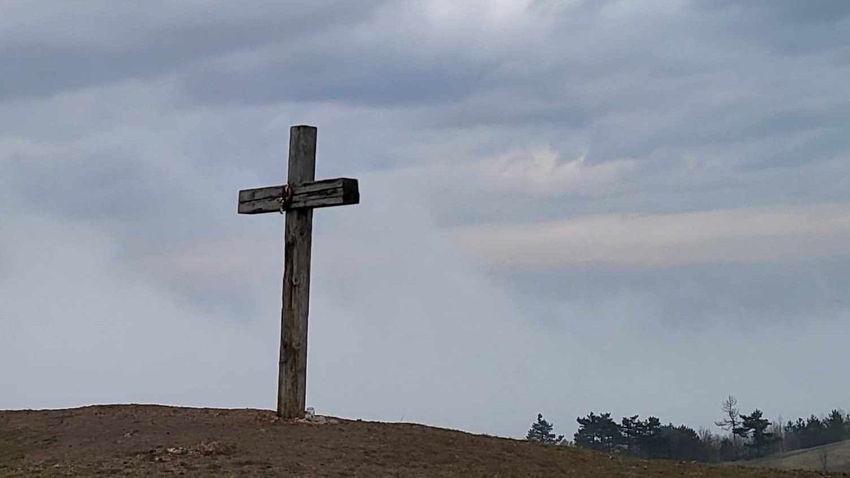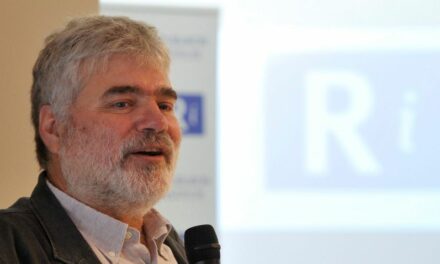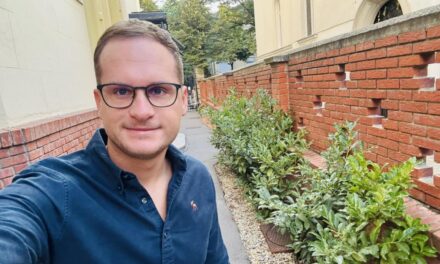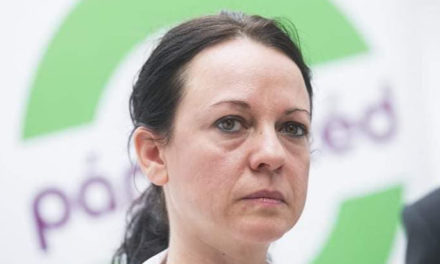Still, how can a less than one-meter concrete foundation and the wooden cross on it damage the protected plants?
The public mood in Nagykovács was deeply moved by the case of the old-new cross in Nagy-Sénás. Opinions are divided, as in all public matters. By accurately revealing the facts and related issues, we can get closer to the truth.
A few years ago, unknown persons erected a simple wooden cross at one of the most beautiful panoramic points in the outskirts of Nagykovácsi, in the area of the Kis- and Nagy-Szénás mountain group. The visual's symbolic message was strong from the beginning, today it is even more so:
we are members of a community based on Christian foundations and traditions, the heritage connected to this binds us and holds us together, gives us strength and hope.
Nowadays, this message is becoming more and more important in Europe, which is increasingly abandoning its traditional values. Not by chance, but as a clearer message, the giant light cross has also been placed at the end of the Budapest fireworks on August 20 in the last two years.
The simple wooden cross didn't bother anyone until August 19, 2023 - or if it did, we, the residents of Nagykovács, didn't really find out about it until now. On August 19, exactly one day before the feast of St. Stephen, the cross was cut into pieces by unknown perpetrators and then burned. The timing suggests intentionality, and the suspicion is not unfounded.
This fundamentally contradicts the theory "the mischievous children could have been young people in an enlightened state", rather it suggests the opposite. Feel free to call it a provocation;
whoever planned this, carried it out, most likely expected the immediate and distant consequences.
The first shocked reaction was followed by a clash of two camps of opinion on social media. One camp called for the re-erection of the cross as soon as possible, the other the opposite, with the justification that it was originally erected without permission anyway, and moreover, if everyone did this, then anyone could erect anything in this panoramic place.
From this argument, it follows that the number one symbol of Christianity is no more than one of many symbols, if this can be restored, then any statue, symbol, anything with a different message can be placed next to it.
Two thoughts arise in this regard:
the cross, as the number one symbol of Christianity, has a thousand-year-old message that cannot be compared to anything else, so we can safely say that it deserves an exceptional, distinguished place in our culture and behavior.
The municipality of Nagykovács took a position in favor of the re-establishment of the cross, this became a matter of principle, and there was no way to let it go. Our member of parliament Tamás Menczer assured his full support for the plan to restore the cross from the beginning. The new base of the cross and the new cross were completed, the government office approved the restoration, so the new cross could have already been returned to its original place with a permit.
That's when András Füri, the director of the Danube–Ipoly National Park, intervened and announced that he does not support the restoration, because the cross poses a threat to the common anemone, the orphan-leaved flax and the badger's gorse. We are talking about beautiful flowers and plants, it is worth looking for them on the Internet, but the connection is not entirely clear from a scientific point of view.
How exactly does a less than one meter concrete foundation and the wooden cross on it damage these protected plants?
Is it the area under the concrete foundation? Or from the surrounding area? If so, what is the essence of the connection? Does this foundation cause more damage than the large camp of free cyclists or pedestrians following the route of the Blue Tour?
András Füri is an old member of the staff of the Danube–Ipoly National Park, he worked as department head between 1990 and 1997, as deputy director from 2000, and as director from 2005. If you do not support the restoration of this cross, it is likely that there will be no cross in the entire area of the national park under your control, neither now nor in the future.
This was followed by nature conservation activist Judit Vojczek, who reported the government office because, in addition to the plants listed so far, the cross also endangers the fox butterfly, the saw-legged grasshopper and the fat millet flower. The scientific question is the same here: what exactly is the connection between the less than one meter foundation or the presence of the cross and the surrounding wildlife? Does this damage really have such unforeseeable consequences that it justifies a court complaint?
Information about her political identity is completely missing from Judit Vojczek's autobiography, published in the debate, which details her nature conservation activities: in the 2019 local government elections, she was also in the team of the mayoral candidate Emőke Kósa called Öszkekovácsoló. The Székovácsoló association was supported by Bernadett Szél and Klára Dobrev on behalf of the DK.
This information is also available on the flyers and introductory videos of the time.
In this way, it was possible to stop the re-establishment of the cross, whip up local tempers, and sharpen a process that started out as peaceful and normal at idle.
We await the continuation and the answers to the questions.
Klára Miklósi, vice president of Fidesz in Nagykovács
Source and featured image: Magyar Nemzet













